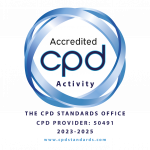Lead Without Micromanaging
Lead Without Micromanaging
In leadership, trust isn’t just a virtue – it’s a strategy. The most effective leaders know that genuine influence doesn’t come from constant oversight but from empowering others to take ownership of their work. To lead without micromanaging is to recognise that your team’s potential grows when given the space to think, decide, and act with confidence.
“Clarity sets the direction. Trust powers the journey.”
The Hidden Cost of Micromanagement
Micromanagement often comes from good intentions – a desire to ensure quality, accuracy, and consistency. Yet, over time, it quietly erodes motivation and creativity. When every decision is questioned or every step closely supervised, employees begin to second-guess themselves. They spend more time seeking approval than solving problems.
The result? A team that executes rather than innovates and a leader who becomes exhausted by the weight of every small decision.
Shifting from Control to Clarity
Letting go of control doesn’t mean letting go of standards. It means providing clarity about goals, priorities, and expectations – so your team can operate confidently without constant intervention. Instead of asking, “How are you doing that?”, try asking, “What support do you need to move this forward?” This simple shift transforms your role from overseer to enabler.
Building a Culture of Accountability
Accountability thrives when people understand their purpose and have the autonomy to pursue it. Encourage your team to set measurable goals, communicate progress, and share learning outcomes openly. This builds a sense of ownership not because someone is watching, but because they care about the impact of their work.
Celebrate progress, not perfection. Recognise initiative, even when results aren’t flawless. In doing so, you create an environment where people take responsibility because they want to, not because they have to.
Becoming a Leader Who Listens
True leadership is about presence, not proximity. You don’t need to be in every meeting or copied on every email to stay connected. Instead, schedule intentional check-ins focused on guidance, not inspection. Ask meaningful questions: What’s working well? What challenges are you facing? How can I help?
When people feel heard and supported, they naturally rise to meet expectations and often exceed them.
Leading with Trust and Purpose
Leaders who step back to empower their teams often find that performance doesn’t just sustain – it multiplies. When trust replaces control, creativity flourishes. When purpose replaces pressure, engagement deepens.
 “People grow because you believe they can.”
“People grow because you believe they can.”
Leading without micromanaging isn’t about doing less, it’s about doing what matters most. It’s about cultivating an environment where clarity, trust, and accountability coexist and where people grow because you believed they could.



